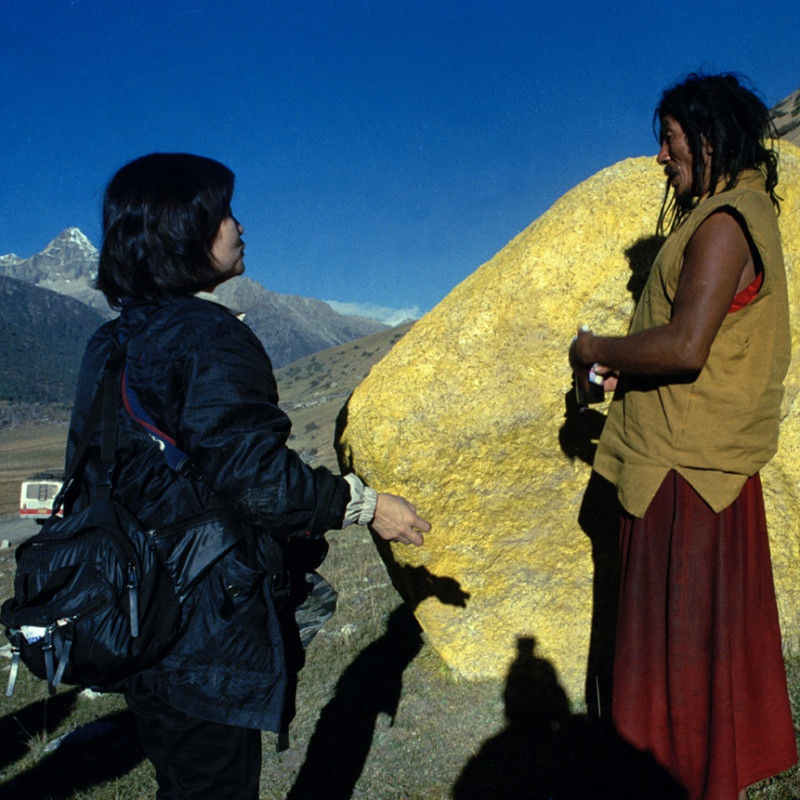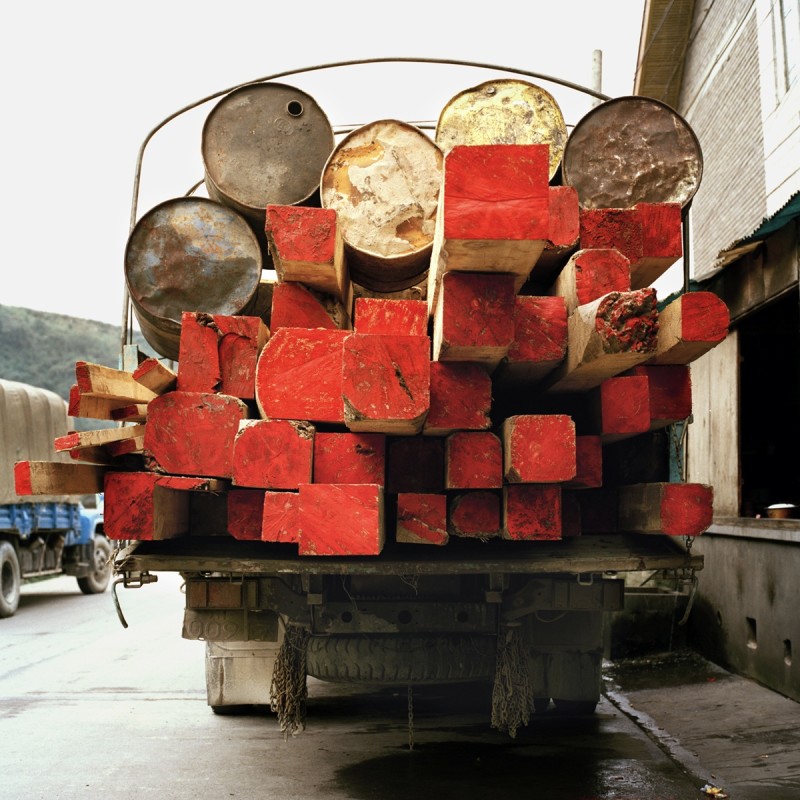Following the success of multimedia artist Zhao Liang’s solo show, “In an Instant,” Three Shadows is pleased to present “Ten Years of Moving Rainbow: Photography by Xiong Wenyun.” A prolific female artist, Xiong Wenyun’s multidisciplinary works link individual emotion with the social environment through a unique, subtle language. Her works are not confined to the exhibition hall, but attract a wider audience through their simple, direct force.
Xiong Wenyun graduated from the ink-painting department of the Sichuan Academy of Fine Arts. In the nineties, she studied and taught in Japan, during which time she did in-depth research on the composition of color and created abstract paintings that embodied the energy of color sequences. After returning to China, she brought these experiments outside. Beginning in 1998, she spent three years working on the multimedia project “Moving Rainbow” on the Sichuan-Tibetan highway. The project incorporates installations along the highways with local architecture and motorcades of trucks. Captured through photography and video, this multidisciplinary, experimental project combines contemporary art, society, history, culture, local ecology, environmentalism, and activism by both artist and audience.
Xiong Wenyun’s experimental and psychological use of color subtly establishes a dialogue between the individual and the environment in the Tibetan region. Survival in the bitter plateaus and the fragile ecological environment directly influenced the relationship between people and nature in her project. The Sichuan-Tibetan highway crosses over the Jinsha, Lancang, and Nujiang Rivers, and the Hengduan Mountains between them, while the Qinghai-Tibetan highway traverses frozen plains that reach 5,000 meters in altitude. The natural conditions in these areas are unusually difficult, with dramatic changes in climate, earthquakes, mudslides, and other frequent natural disasters. The Tibetan people who live in these areas have created a unique life and culture. The colorful forms that Xiong Wenyun uses can be found in the clothes of the local ethnic minorities or the prayer flags of Tibetan Buddhism. She uses these pure forms to discuss the clash of modern civilization and mysterious ancient traditions, examine the meeting point of man and nature, and explore the practice of harmonious living. Her installations appear as blocks of pure color in the doorways of truck stops, painted stones and tents along the highway, and in motorcades of trucks covered by colorful canvas. The snow-covered plains are a stage for her art form, which melts organically into the local nature and culture.
A country in the midst of vast social changes provided Xiong Wenyun with a unique angle and space for her art. Building on her foundations as an established individual artist, Xiong Wenyun attempted to connect with the far-reaching mechanisms of society. Along the road to Tibet, Xiong Wenyun and her partners used art as a medium for communicating practices of environmental protection. They held exhibitions, distributed information, collected signatures, and invited people to take pictures and make photographs. Through these methods, Xiong Wenyun and her team spread environmental awareness and art appreciation. The most important part of her project was the participation of all these different people.
Xiong Wenyun uses clear and forceful artistic language to capture the passion for life that is inherent in humanity. Artistic creation must go beyond a status quo attitude; new developments require that contemporary art not be limited to traditional mediums and means of expression. Artists must work hard to break free of the limits that hold them back and face life directly – greater interaction with the public and cooperation with both individuals and organizations will better convey the influential power of art. Though photography is not her only medium, Xiong Wenyun’s works in photography and video possess an infectious strength, in which aesthetic beauty is surprising, joyful, and thoughtful. Xiong Wenyun has broken free of the dogma that so often limits conceptual art; in the process of creating, she has brought to light the spirit of the human heart. Through this comprehensive means, we see a new vitality that can be awakened by contemporary art.








